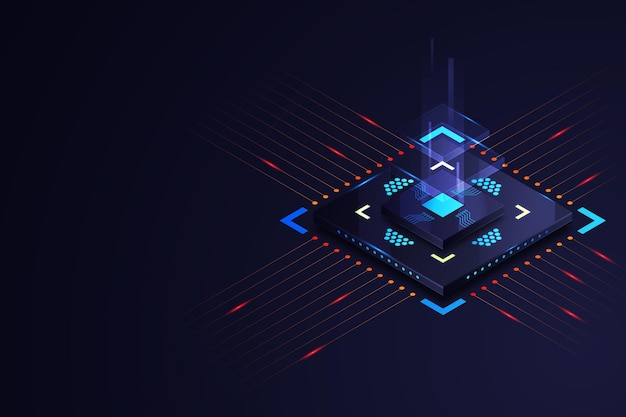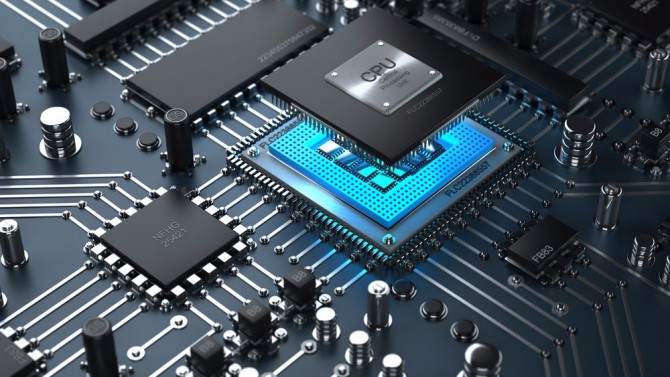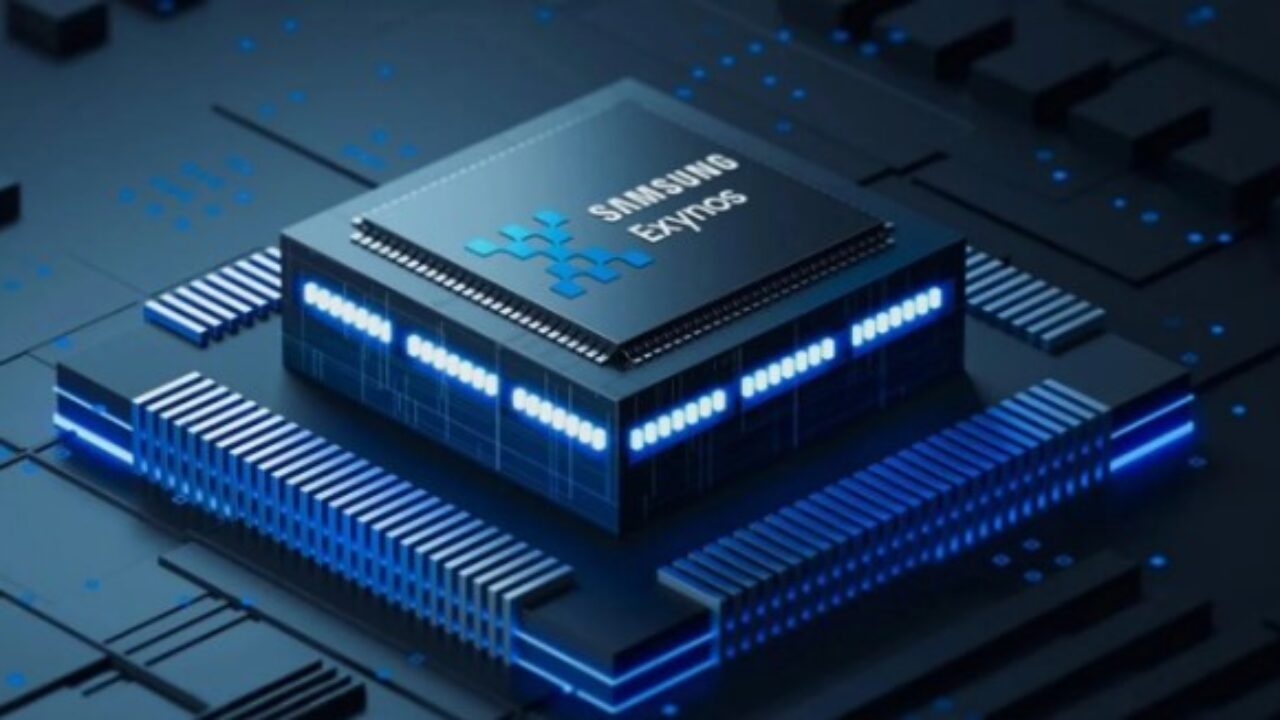Table of Contents
In the intricate realm of computing, the processor stands as the paramount entity, orchestrating the vast symphony of operations that define modern technology. Often referred to as the central processing unit (CPU), this component is aptly described as the brain of your computer, managing and executing instructions that power every function of your device. The profound significance of the processor cannot be overstated, as it plays a pivotal role in determining the performance, efficiency, and capability of your computer.
The Essence of a Processor
At its core, what is a processor? It is a microelectronic device designed to carry out a sequence of instructions, commonly known as a program. The processor interprets and executes commands from the computer’s software, performing tasks such as arithmetic calculations, data processing, and logic operations. These tasks are fundamental to the functioning of any computer, whether it is a personal desktop, a smartphone, or a large-scale server.
The architecture of a processor is a marvel of modern engineering, consisting of billions of transistors etched onto a tiny silicon chip. These transistors act as the fundamental building blocks of the processor, enabling it to perform complex calculations at lightning speeds. The processor’s ability to manage and execute multiple instructions simultaneously is a testament to the advancements in semiconductor technology, which have continually pushed the boundaries of processing power.
The Evolution of Processors
The evolution of processors is a tale of relentless innovation and technological advancement. The journey began in the mid-20th century with the advent of the first microprocessors, which were rudimentary by today’s standards. These early processors, such as the Intel 4004, were limited in their capabilities, capable of performing only a few thousand instructions per second.
As technology progressed, so did the complexity and performance of processors. The introduction of the x86 architecture by Intel in the 1970s marked a significant milestone, laying the foundation for modern processors. This architecture, characterized by its compatibility with a wide range of software applications, became the industry standard and remains dominant in personal computing today.
The subsequent decades witnessed exponential growth in processing power, driven by advancements in semiconductor manufacturing and the advent of multi-core processors. These developments allowed processors to perform more tasks in parallel, significantly enhancing their efficiency and performance. Today, processors are equipped with multiple cores, each capable of executing its own set of instructions, leading to a dramatic increase in computational power.
The Anatomy of a Processor
Understanding the anatomy of a processor is essential to grasp its role in computing. A processor consists of several key components, each serving a specific function in the execution of instructions. These components work in unison to ensure the seamless operation of the processor, enabling it to perform a wide range of tasks.
1. The Arithmetic Logic Unit (ALU)
The Arithmetic Logic Unit (ALU) is the heart of the processor, responsible for performing arithmetic and logical operations. These operations include basic mathematical calculations, such as addition and subtraction, as well as logical comparisons, such as AND, OR, and NOT operations. The ALU is crucial to the processor’s ability to manipulate data, making it a fundamental component of any computing system.
2. The Control Unit (CU)
The Control Unit (CU) acts as the conductor of the processor, directing the flow of data and instructions between the various components. It is responsible for fetching instructions from memory, decoding them, and coordinating their execution by the ALU and other units. The CU ensures that the processor operates in a synchronized manner, executing instructions in the correct sequence and managing the overall operation of the computer.
3. The Registers
Registers are small, high-speed storage locations within the processor that temporarily hold data and instructions during execution. These storage units are crucial for the efficient operation of the processor, as they provide quick access to data that is frequently used in computations. Registers come in various types, including general-purpose registers, which store data temporarily, and special-purpose registers, which store specific information, such as the program counter and the instruction register.
4. The Cache Memory
Cache memory is a small, fast memory located within or close to the processor that stores frequently accessed data and instructions. The purpose of the cache is to reduce the time it takes for the processor to access data from the main memory, thereby improving overall performance. There are typically multiple levels of cache, with Level 1 (L1) being the fastest and smallest and Level 3 (L3) being larger but slightly slower. The efficient management of cache memory is essential for optimizing the performance of modern processors.
Processor Performance Metrics
A variety of metrics determines the performance of a processor, each reflecting a different aspect of its capabilities. Understanding these metrics is crucial for evaluating the efficiency and effectiveness of a processor, especially when comparing different models or architectures.
1. Clock Speed
Clock speed, measured in gigahertz (GHz), represents the number of cycles a processor can execute per second. Each cycle corresponds to a single instruction or a part of an instruction, depending on the complexity of the operation. A higher clock speed generally indicates a faster processor, as it can execute more instructions in a given period. However, clock speed is not the sole determinant of performance, as other factors, such as the number of cores and the efficiency of the processor’s architecture, also play a significant role.
2. Core Count
Core count refers to the number of independent processing units, or cores, within a processor. Each core can execute its own set of instructions, allowing the processor to perform multiple tasks simultaneously, a capability known as parallel processing. Multi-core processors have become the norm in modern computing, with dual-core, quad-core, and even octa-core processors being commonplace in consumer devices. The increase in core count has led to significant improvements in performance, particularly for tasks that can be parallelized, such as video rendering and scientific simulations.
3. Instruction Set Architecture (ISA)
The Instruction Set Architecture (ISA) is the set of instructions that a processor can execute. It defines the low-level commands that the processor understands, such as arithmetic operations, data movement, and control flow instructions. The ISA plays a crucial role in determining the compatibility of a processor with software applications, as different processors may support different instruction sets. The most common ISAs in use today are x86, ARM, and RISC-V, each with its strengths and weaknesses.
4. Thermal Design Power (TDP)
Thermal Design Power (TDP) is a metric that represents the maximum amount of heat a processor is expected to generate under typical operating conditions. TDP is an important consideration for cooling and power management, as processors with higher TDPs require more robust cooling solutions to prevent overheating. While TDP does not directly measure performance, it provides an indication of the processor’s power consumption and thermal characteristics, which are critical factors in system design.
The Role of Processors in Modern Computing
Processors play a central role in modern computing, driving the performance and capabilities of a wide range of devices. From personal computers and smartphones to servers and supercomputers, processors are the engines that power the digital world.
1. Personal Computers
In personal computers, processors are responsible for executing the instructions that make up the operating system and applications. The performance of the processor directly impacts the user experience, influencing everything from the speed of application launches to the smoothness of multitasking. Modern processors in personal computers often feature multiple cores, high clock speeds, and advanced cache architectures, enabling them to handle a wide range of tasks with ease.
2. Smartphones and Tablets
Smartphones and tablets rely on processors, known as system-on-chips (SoCs), to manage all aspects of their operation. These processors integrate multiple components, including the CPU, GPU, and memory, onto a single chip, optimizing power efficiency and performance. The processors in smartphones are designed to balance performance with power consumption, allowing devices to deliver a responsive user experience while maintaining long battery life.
3. Servers and Data Centers
In servers and data centers, processors are the workhorses that handle the massive workloads associated with cloud computing, big data, and artificial intelligence. These processors are designed for high-performance computing, with features such as multiple cores, large caches, and support for virtualization. The ability of server processors to handle parallel processing and manage large amounts of data makes them ideal for tasks such as web hosting, data analysis, and machine learning.
4. Supercomputers
Supercomputers represent the pinnacle of processing power, with processors that are capable of performing trillions of calculations per second. These machines are used for complex simulations, scientific research, and other tasks that require immense computational resources. The processors in supercomputers are often custom-designed for specific applications, with features such as vector processing, massive parallelism, and specialized instruction sets. The performance of supercomputers is measured in FLOPS (floating-point operations per second), with the most powerful systems capable of achieving exaflop performance.






